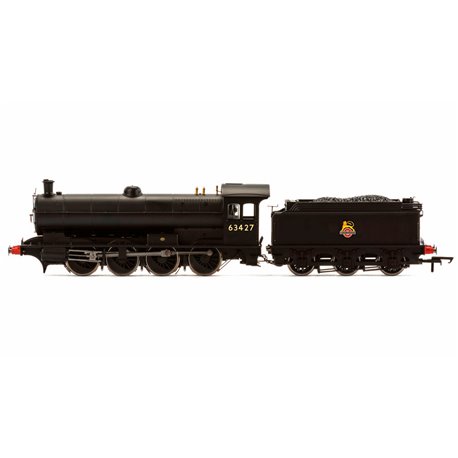No products
Product successfully added to your shopping cart
There are 0 items in your cart. There is 1 item in your cart.
 View larger
View larger BR Q6 Class 0-8-0 63427 - Era 4
R3542
Hornby
This product is out of stock
More info
BR Q6 Class 0-8-0 63427 - Era 4
At the end of the first decade of the 20th century, the upsurge in the growth of mineral traffic in the North-East exceeded the amount of steam haulage available to transport it. The existing North Eastern Q5 locomotives, designed by Wilson Worsdell, were extremely capable engines but the new Chief Mechanical Officer, Vincent Raven, felt a more powerful, superheated design would be justified in the circumstances. Between February 1913 and March 1921, 120 examples of Raven's new T2 eight-coupled locomotive were built, in six batches, resulting in a powerful, sturdy and reliable engine design that fulfilled its requirement to haul mineral and heavy freight traffic, right through to late 1967. The first seventy were built at Darlington, with the last batch of fifty being constructed by Armstrong Whitworth & Co. of Newcastle. The class was not intended for passenger traffic and was therefore purely equipped with steam braking for both engine and tender, five different types of which were used with the locomotive which ranged from the early 3,940 gallon tenders to the later 4,125 self-trimming type. When the NER was absorbed into the LNER at Grouping in 1923, the locomotive class was designated as Q6 and they operated from sheds across the North-East of the territory, from Humberside to Tyneside and across Northumberland into Cumbria, even making it into Scotland during 1923. Although the class remained visually similar during its lifetime, subtle differences arose when the boilers were updated, starting between 1927 and 1929. Identified by the boiler dome being placed just over a foot further back towards the cab, with a flatter aspect, in due course all the engines were fitted with these new Diagram 50A boilers. Other detail differences were evolutionary, rather than revolutionary, with items such as smokebox doors, chimneys and buffers changing form, whilst the introduction of positive drive led to changes in the position of the lubricators. At Nationalization in 1948, all 120 engines were taken on by British Rail, their numbers being placed in the 60xxx range and the process was completed by June 1951. The first withdrawal from service came in May 1960 and this only arose due to an accident, it was to be December 1961 before the next occurred and it wasn't until April 1963 that withdrawal started in earnest. A single Q6, locomotive No.2238, has been preserved, saved by the North Eastern Locomotive Preservation Group and housed at the North York Moors Railway. Locomotive No.63427 entered traffic in April 1920 at Dairycoates, as NER no.2270, having been built at Armstrong Whitworth with the Works No.18. On March 5, 1945, the locomotive moved to West Hartlepool, from where it was fitted with the 50A boiler on March 8th and renumbered, first as LNER No.3427 in July 1946, then as BR No.63427 in November 1949. A move to Consett followed at the very beginning of 1951, where it stayed until May 23, 1965, the locomotive moving to North Blyth for under a month before being withdrawn from service on June 14, 1965. Maximum curve Hornby 2nd radius + / 438mm+.

